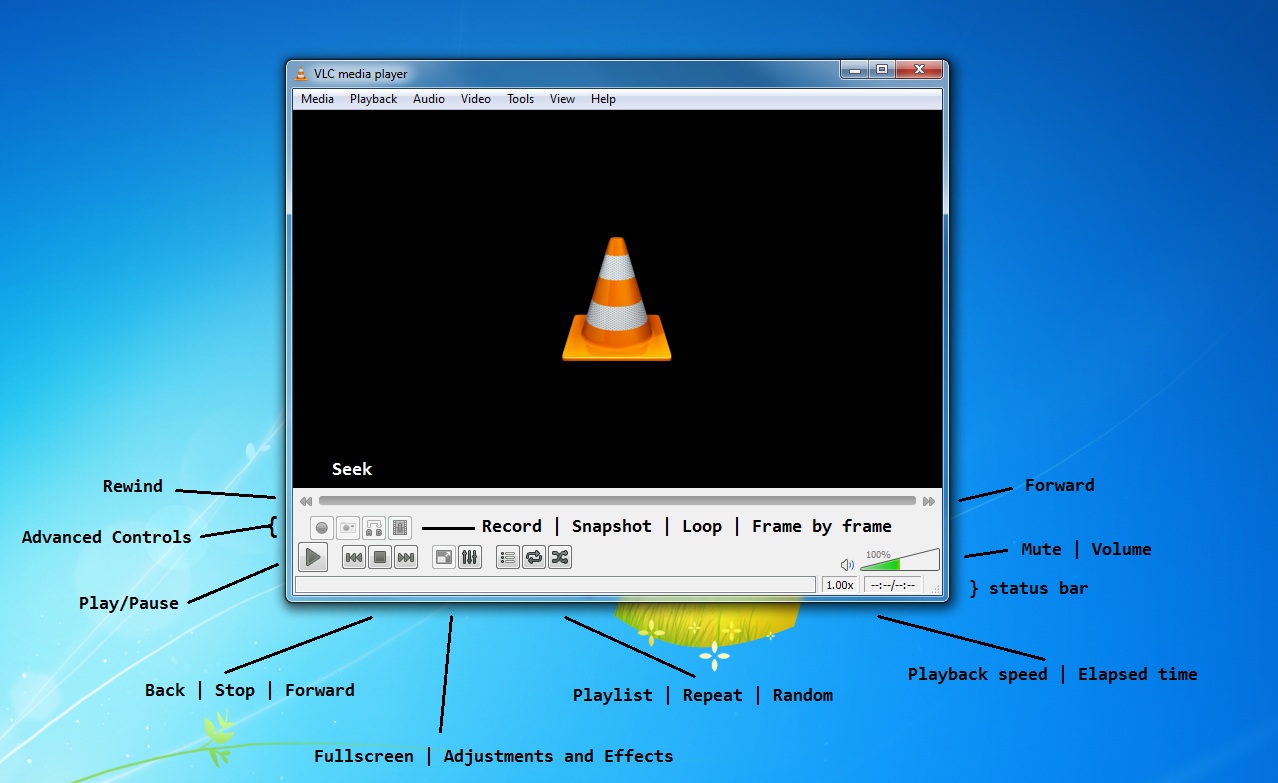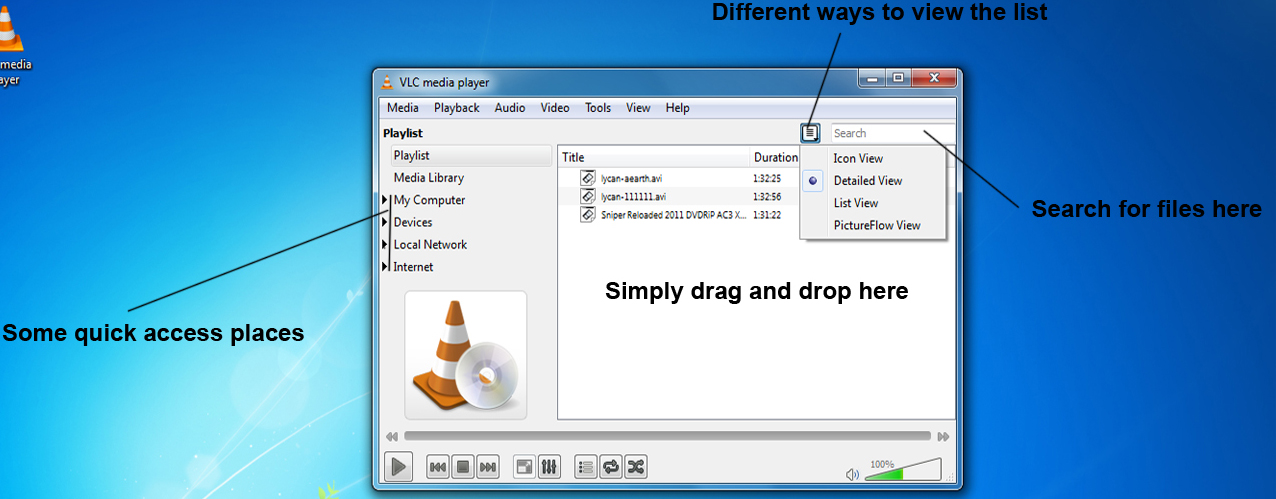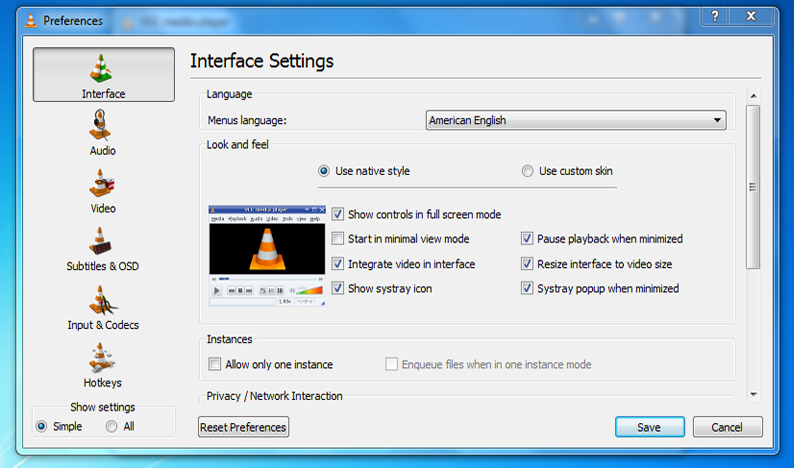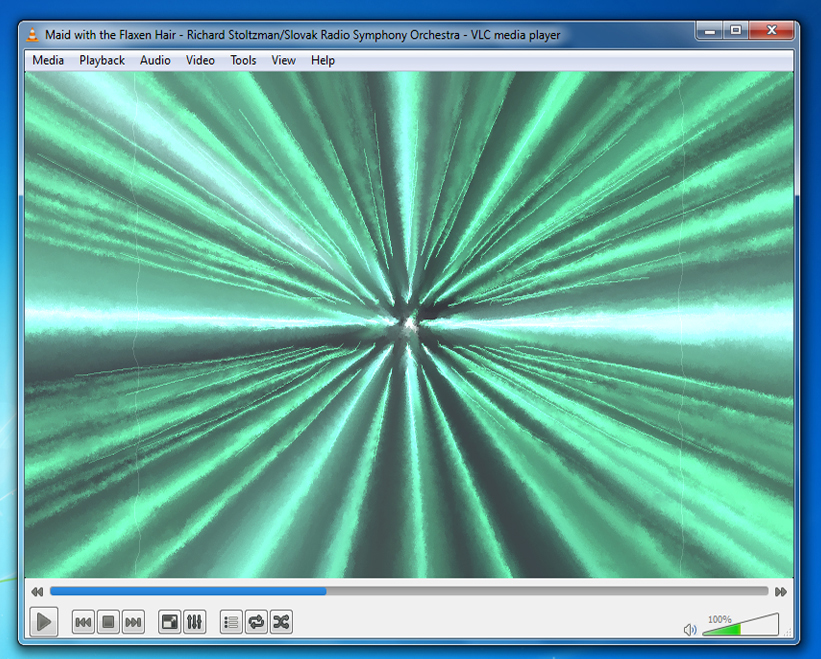Documentation:Play HowTo/Basic Use/Interface Windows
VLC 1.2 Windows 7 Interface Documentation
The first look when you open VLC player, showing the functions of the buttons:
- Play/pause - Plays or Pauses the VLC
- Backward - Previous media or skip backward when key-pressed
- Stop - Stops the playback
- Forward - Next media or skip forward when key-pressed
- Toggle Fullscreen - Switch to Fullscreen
- Extended settings - Opens the adjustments and effects menu
- Playlist - Opens the playlist
- Repeat - Turn on/off the repeat function
- Random - Turn on/off the random playback
- Volume - You can control the volume of the sound
The next screenshot shows how does the Fullscreen looks like:
- Slower - Slowers the playback
- Faster - Fasters the playback
- Exit Fullscreen - press Esc to exit Fullscreen
- Elapsed Time - You can switch beside elapsed time and remaining time
In that image you can see what you can do in the Playlist(called with Ctrl+L or View/Playlist): Add media into the playlist with the Drag-and-drop function right where you want it to be! Some quick places you can browse directly from the player. Change the view of your playlist however you want by picking one of the views.
You can change the settings the way you like it from Interface to some usefull hotkeys: Everything you want to change or configure is placed in the Preferences menu (Ctrl + P or Tools/Preferences).
This image shows an example for the visualizations that you can turn on: When playing music you can turn on the visualizations from Audio/Visualizations and pick the one you like:




